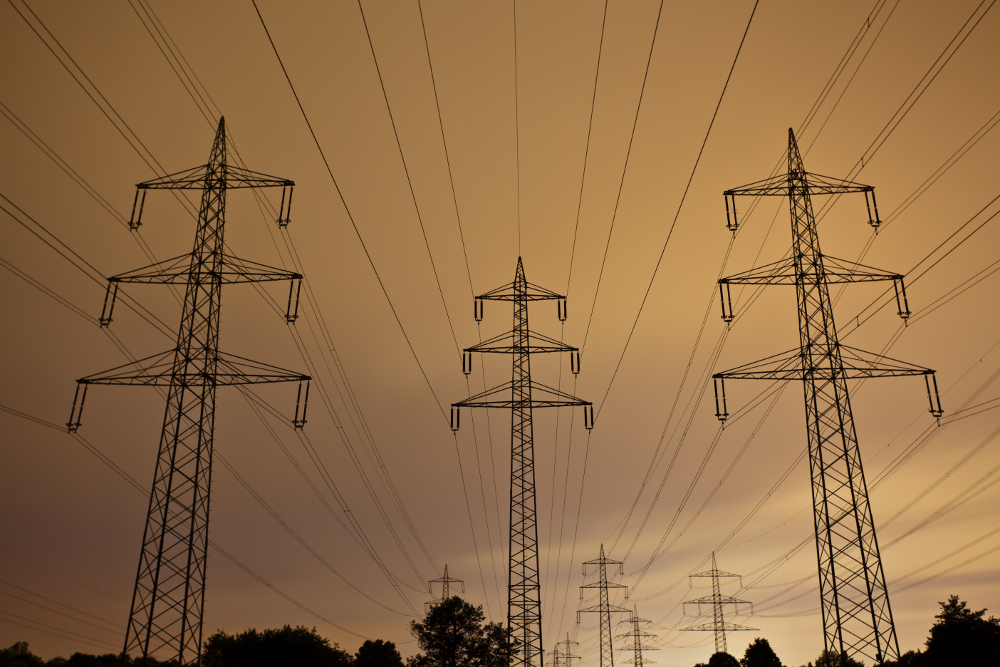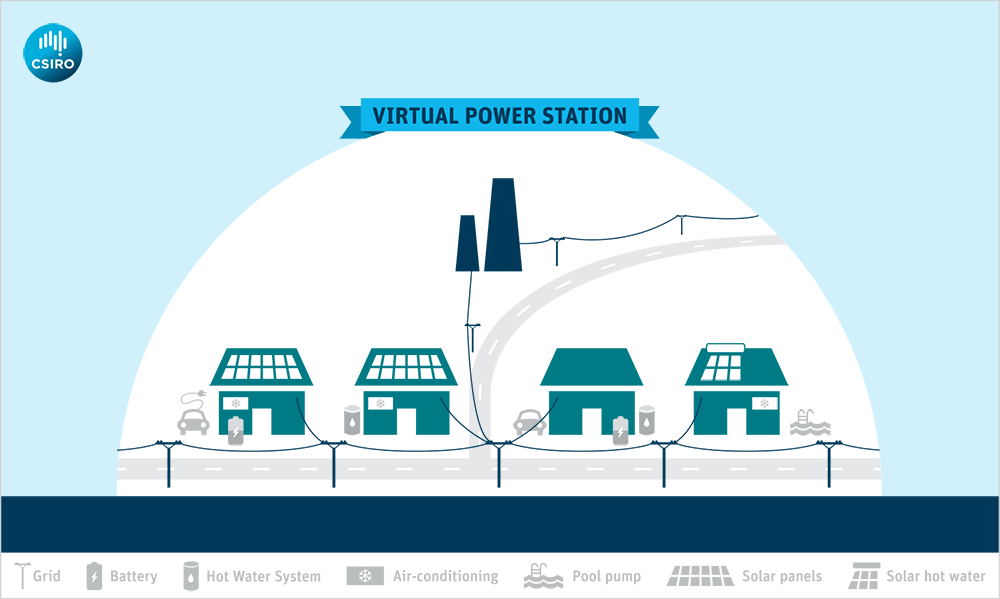What if we could avoid blackouts at times of peak demand by making more supply available while reducing the demand for electricity? Our Virtual Power Station project is investigating how to do just that!

As the mercury rises and we all turn on the aircon, how can we avoid blackouts?
With hot temperatures forecast for many parts of the country over the weekend, we’ll all be hoping to turn up our air conditioners for some respite from the sweltering summer heat! Unfortunately, power outages may leave some of us hot and bothered.
Power outages are caused when we have insufficient energy supply to meet consumer demand. This often occurs during periods of increased demand, such as hot sunny days.
However, the bright side of these cloudless days is they’re perfect for generating lots of solar energy. Solar energy can be used to reduce demand at the times it matters most for the stability of the electricity network.
So what if we could avoid these blackouts at times of ‘peak demand’ by making more supply available while reducing the demand for electricity?
Our Virtual Power Station (VPS) project is investigating how to do just that!
The Virtual Power Station
The VPS is a collection of solar panels, batteries and electrical appliances (such as air conditioners) in a neighbourhood that are intelligently managed to maintain the stability of the power supply. VPS can help to avoid future blackouts by optimising how, when and where we use energy in our homes.
Thanks to funding from the Australian Renewable Energy Agency (ARENA), we’re trialling a VPS in the sunny Brisbane suburb Yarrabilba in collaboration with Energy Queensland, LendLease, inverter manufacturers SMA and Selectronic, and electric vehicle charger manufacturer Tritium.
Our trial is testing supply-demand management algorithms in 67 households with intelligent air conditioners, batteries and home solar systems. If trials are successful, we can expect household savings of hundreds of dollars, the installation of significantly more solar energy systems, and fewer blackouts into the future. All whilst keeping your house cool on a stinkin’ hot summer day!
But how?
The VPS allows neighbourhoods to use electricity more intelligently, by optimising supply and shifting demand patterns.
For example, pre-cooling of rooms is a demand-side solution that could be easily adopted in the VPS neighbourhoods of the future. By remotely turning on your air-conditioner before you leave work, you could return home to a cooler and more pleasant home, reducing the energy needed for electricity during the peak demand period.
You could also store energy produced by your rooftop solar cells during the day in batteries to be used later when its needed most. This would reduce strain on the electricity network, by minimising your demand for centrally generated energy.

The Virtual Power Station links energy sources like rooftop solar panels with energy storage devices and load control systems in a web-based network, to create a single reliable energy supply.
What can be done until then to avoid blackouts?
While the VPS is still in trial phase, there are many things we can all in the meantime to help avoid blackouts.
Here are some of our best tips for you to try at home this weekend:
- Set your air conditioner to no less than 26 degrees and only turn it on in rooms you’re actually using. Alternately, use fans and open windows to circulate cool air as much as possible.
- Turn off unnecessary indoor lighting, particularly if no-one is using the room.
- Turn off appliances usually left in standby mode, including TVs, computers and microwaves.
- Avoid using your electrical oven or stove. Give the BBQ a workout instead!


14th February 2017 at 5:52 am
In practical it would really need a high skill to implement in reality. VPS remote monitoring would be a challenge in the whole set up.
17th February 2017 at 7:02 pm
DO NOT Use air con ..Open All windows n doors and put ya fans on helicopter speed .Getcha gear off to a respectable level . Drink plenty o’ fluids TOO EASY !!!.
13th February 2017 at 10:39 am
I think this is the way to go. I do not have air conditioning here in Adelaide, but I managed to tough out the recent heat wave by closing the house off during the day and opening it up at night. My 1923 house takes a good day to catch up with the outside temperature. One can now buy air conditioners that can run directly off solar panels or the mains, so run it at maximum during the day off the panels and use the house as a giant thermal battery, storing the cold for the night. For this application, one doesn’t need electrical batteries. Keep them for storing electricity for lighting etc, until someone works out a way for storing light!
12th February 2017 at 3:15 pm
Hi Guys,
This is great stuff and I think it is going to be important in the fight against climate change.
Quick question – is this different to Reposit Power’s commercial offering? I earned some money this week during the heatwave because Reposit Power was helping out the grid using my battery. It happened a few times on Thursday and Friday. It is pretty cool stuff. It is like the future is here today!
13th February 2017 at 6:03 pm
As I understand it, Reposit power’s systems do not coordinate with loads to use energy more efficiently, whereas VPS would have that capability.
12th February 2017 at 2:01 pm
I like the concept, but I imagine the complexity is far greater than you have assumed in this pilot test. For example, the aging population means more people live at home during the day and don’t go off to work. As a retiree, my wife and I, like many in our street, are large daytime home power consumers, so we have solar installed, but many pensioners can’t afford the up front installation costs or don’t have suitable roofs. I also wonder if we shouldn’t be making double glazing and better insulation more affordable, and possibly large (full footprint) basement water tanks to buffer diurnal temperature changes, and even circulate the water for cooling heating as appropriate. An holistic (ie not just electricity) approach could really cut our power needs. Perhaps a suburb-based approach would also help cut transmission losses, and eliminate the all-eggs-in-one-basket blackouts that you’re trying to minimise. Great work guys.
12th February 2017 at 1:28 pm
VG. You will need an internet connection to ever house. So you can control what time, your hot water, refrigerator, washing machine, stove & Hot plates , etc switch on . This will be controlled from a Master Computer located in Canberra